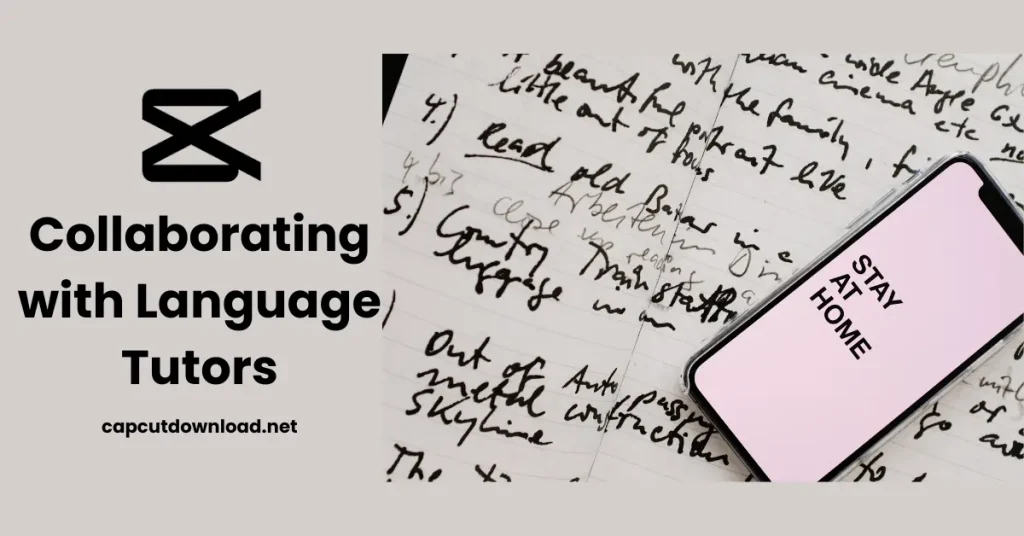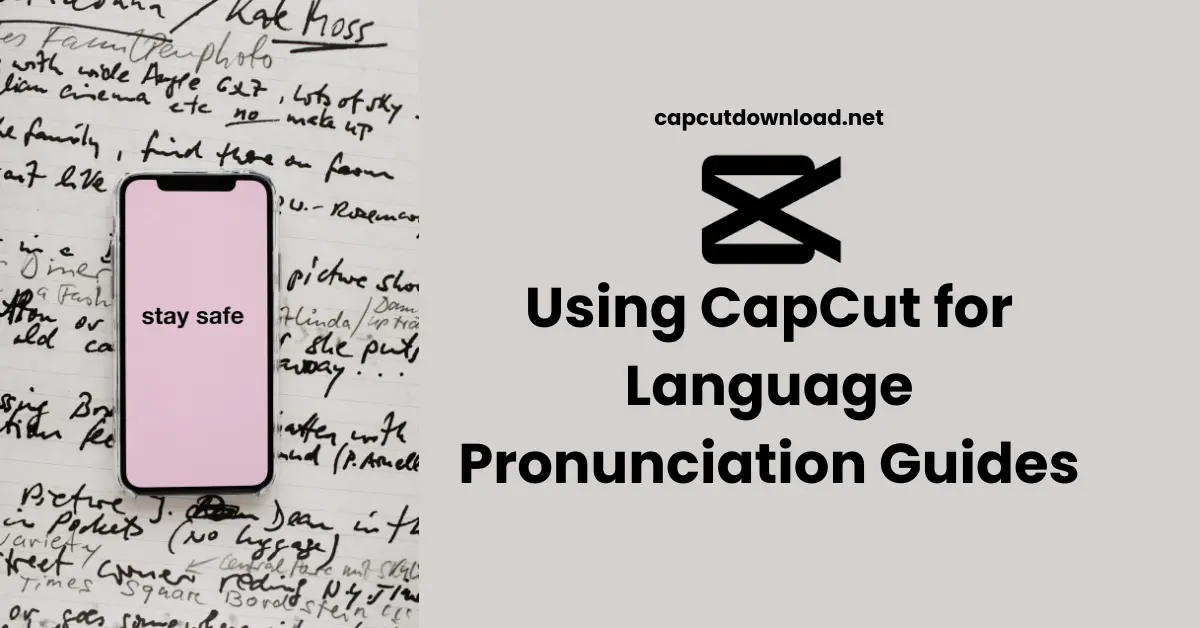Using CapCut for Language Pronunciation Guides
Learning how to pronounce new words in a foreign language can be tricky, especially without someone by your side to correct you. That’s where using CapCut for language pronunciation guides can become a total game-changer. With its powerful video editing features, CapCut gives language learners and educators an easy way to create visually rich, audio-supported lessons that make pronunciation easier to grasp. Get the best video editing experience with CapCut premium APK unlocked, which gives you access to all pro tools. Edit like a professional without any limitations.
Why Use Video for Language Learning?
The Power of Visual and Audio Cues
Your brain loves visuals. And it especially loves matching what it hears with what it sees. That’s why video is such a helpful tool for learning how to pronounce new words. You get the sound, the lips, the expression—everything you need to imitate it yourself.
Reinforcing Memory with Multimedia
Reading a word in a textbook is fine, but pairing that word with sound and movement? That’s how you get it to stick. CapCut allows you to combine all three, turning your guide into a memory magnet.
CapCut – A Brief Introduction for Beginners
What Makes CapCut a Go-To Editing Tool?
CapCut has made a name for itself because it’s beginner-friendly but still packed with features. You don’t need editing skills to start using it. Just drag, drop, trim, and go. It also has built-in voice tools, text animations, subtitles, and more.
Available Platforms and Accessibility
Whether you’re a team Android, iPhone, or even prefer desktop editing, CapCut has your back. It works smoothly on phones and tablets, and there’s even a web version for those who like working on a bigger screen.
Setting Up a Pronunciation Guide Project in CapCut
Gathering the Right Materials
Before you even open the app, gather your tools:
Voice Clips
Record yourself or a native speaker saying the word or phrase.
Native Speaker Videos
If possible, record a video of their face while saying it—mouth movements help a lot.
Text Translations
Add the written word along with translations or phonetic spelling.
Deciding on the Structure for Learning Clips
Think of this as building your tiny lesson. Keep it short—just one word or phrase per clip.
Recording Clear Pronunciation Audio
Using CapCut’s Built-in Voice Recorder
CapCut lets you record audio directly into your timeline. It’s perfect for quick demos or repeating the word slowly and clearly.
Importing External Audio Clips
Already recorded something elsewhere? No problem. Just upload and drop it into place. CapCut supports tons of audio formats.
Matching Text with Spoken Words
Adding Subtitles for Better Learning
You can manually type the word as it’s spoken. Or, if you’re short on time, try CapCut’s auto-caption feature and fine-tune it afterwards.
Using Text-to-Speech in CapCut
Want to add a robotic example for comparison? CapCut has a built-in TTS tool. Use it for alternate pronunciations or to reinforce the learner’s attempts.
Highlighting Syllables or Sounds Visually
Break words into parts and color-code them. Add effects or highlight each syllable as it’s said.
Breaking Down Words for Better Clarity
Using Freeze Frames to Pause on Tough Words
Stop the motion and zoom in on the mouth. It’s like putting a word under a microscope.
Adding Word-by-Word Pronunciation Animations
Use the animation tool to bring syllables on screen one by one, timed with your voice.
Organizing Lessons by Level and Topic
Creating Playlists Inside CapCut
Build your projects as mini-lessons. Then, string them together as a playlist using folders.
Grouping by Difficulty or Language Area
Sort your projects by topics like greetings, verbs, or hard consonants. Easy to follow and even easier to refer back to.
Exporting and Sharing Your Guide
Recommended Export Settings
For mobile sharing, go for 1080p and MP4. It keeps your file light but high quality.
Sharing on YouTube, Instagram, or Private Channels
CapCut lets you export directly to your favorite platform—or just save it for personal use.
Using CapCut Templates for Speed and Consistency
Creating Your Template
Build one layout with all your effects, fonts, and timing—then use it again and again.
Reusing Templates for Multiple Words or Lessons
Why reinvent the wheel every time? Just switch out the audio and text for each new word.

Collaborating with Language Tutors
Getting Feedback on Pronunciation Edits
Send your videos to a tutor and get their notes on how to tweak the flow, pronunciation, or tone.
Combining Tutor Voiceovers with On-Screen Guidance
Bring in a pro’s voice and add your visual elements on top. The best of both worlds.
Tracking Progress with Version Updates
Labelling Each Version with Skill Level
Mark each clip as beginner, intermediate, or advanced. Helps learners track growth.
Comparing Older and Newer Attempts
Put two clips side-by-side. You’ll instantly see how far someone’s come.
Tips for Better Engagement and Retention
Keep Clips Short and Focused
Stick to one word or phrase. Don’t cram too much into one video.
Mix Quizzes and Flashcards After Each Clip
Add a slide with a “Guess the Word” prompt or show the word without sound for review.
Common Mistakes to Avoid
Overloading the Screen with Too Much Info
Stick to clean visuals and big fonts. Don’t make your video feel like a grammar textbook.
Ignoring Sound Quality
Clear pronunciation means nothing if the mic is muffled. Use good equipment and quiet spaces.
Final Thoughts on Learning Pronunciation with CapCut
CapCut turns your phone into a powerful language tutor. From slow-mo breakdowns to animated subtitles, it lets you build pronunciation guides that are both educational and entertaining. Whether you’re teaching yourself or others, these tools can make your language learning journey smoother—and a lot more fun.
Read the blog: Creating Geography Explainer Videos with CapCut
Using CapCut for Language Pronunciation Guides: FAQs
1. How can I make CapCut videos interactive for pronunciation practice?
Add quizzes, fill-in-the-blanks, or pause prompts in between words to let learners repeat after the clip.
2. Can I use CapCut’s auto-caption feature for language learning?
Yes, but make sure to double-check the subtitles for accuracy, especially with different accents.
3. Should I always use native speaker clips in my guides?
It’s highly recommended. It helps learners hear the correct tone and rhythm from the start.
4. What’s the best video length for a pronunciation guide?
Keep it short and sweet—around 15 to 30 seconds per word or phrase is ideal.
5. Can I add music to my CapCut pronunciation videos?
You can, but keep it very low or only during intro/outro to avoid distracting from the word being learned.






